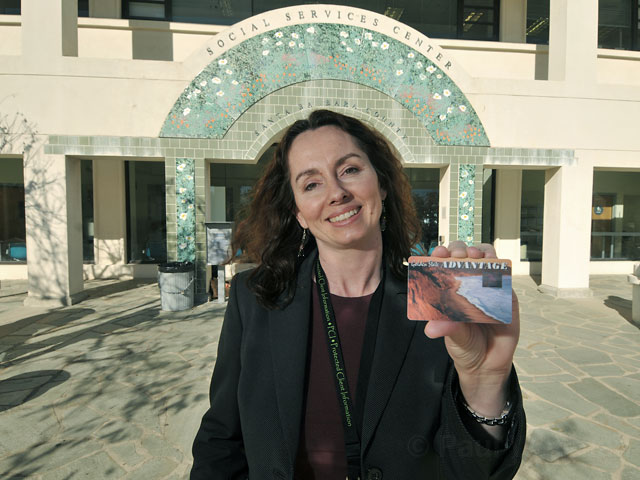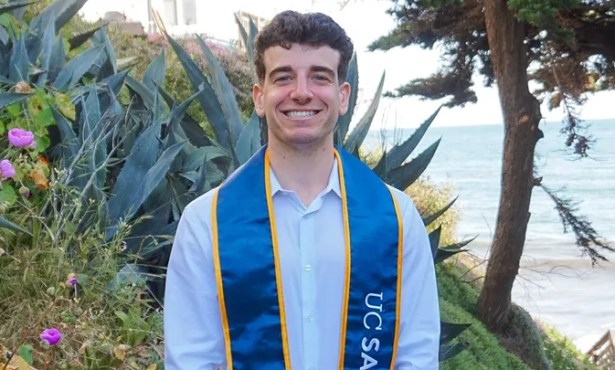Food Stamp Failure
County Misses Out on $47 Million in Federal Benefits

Are you a single individual who nets no more than $903 per month? Or are you part of a family that earns less than $3,085? Perhaps you’re a college student working under the Federal Work Study program? If so, there’s a good chance that you’re one of 36,000 people in the county eligible for food stamp benefits but not receiving them.
Santa Barbara is missing out on an estimated $47 million in federal benefits per year due to underutilization, according to the California Food Policy Advocates (CFPA), despite an increased participation in food stamps — a k a the CalFresh Program — over the course of the recession. A recent CFPA report states every dollar spent through CalFresh generates $1.79 in economic activity. “Santa Barbara forgoes as much as $84 million in economic activity because of low participation in CalFresh,” said Tia Shimada, nutrition policy advocate at CFPA and author of the report. “Leaving these federal funds untapped doesn’t just hurt struggling households; it hurts our economy, as well.”
Because only 36 percent of those eligible for food stamp benefits actually receive them, Santa Barbara currently ranks 44 out of 58 counties in terms of participation. Nationwide, California comes in second to last, just above Wyoming. For example, less than 10 percent of senior citizens statewide eligible for CalFresh benefits actually take advantage of them.
The CalFresh program in Santa Barbara County currently serves 20,000 residents, 60 percent of them children. Barriers to accessing these benefits, said Maria Gardner, assistant deputy director for social services in Santa Barbara, is what turns people off from applying. “Sometimes people don’t even bother applying because it’s so complex,” Gardner said. Quarterly income reporting, fingerprinting, and multiple trips to social services departments — especially for working families — are the main reason participation is so low, she explained. California requires more paperwork than any other state in the nation. “If the state would change those requirements, we would see increased participation in each county,” Gardner said.
Things are being done, however, locally and beyond, to help lift some of these obstacles. Assemblymember Felipe Fuentes (D-Sylmar) plans to introduce legislation in December to lighten the paperwork burden and excessive trips to the social services office. Specifically, the legislation would move California to the “simplified reporting” rules — reporting twice instead of four times per year — used in 49 other states, and would end California’s costly and redundant fingerprint system, which requires all adult members of CalFresh households to come to one of its offices to provide prints. “We’re trying to put through legislation that will help make CalFresh benefits as accessible as possible,” Fuentes said. “We’re just trying to ease the process.”
To make applications easier, in June, Santa Barbara County Social Services began interviewing eligible individuals over the phone; it now also allows people to scan necessary documents and send them via email. “Some people have to risk being fired from their jobs because they have to go to their interview so that they can feed their family,” Gardner said. “We’re trying to make it so [they] can come in at their convenience.”
Eligible applicants include students working under the Federal Work Study program. Approximately 145 work-study participants are at SBCC, and about 800 such students work on campus at UCSB.
Among households, eligible household members can get benefits even if other members are not eligible. Single working individuals — and in some cases, unemployed individuals — can receive up to $200 in CalFresh benefits per month. And, depending on their income, families of up to eight can receive up to $1,202 in benefits.
As part of a federal effort to promote CalFresh, Santa Barbara Social Services has teamed up with Foodbank to help get individuals and families these benefits. “The theory is that we serve the same clients,” Gardner said. “We’re just trying to leverage existing infrastructure.” In Cuyama and other remote areas of the county, Erin Wilson, director of agencies and services at Santa Barbara Foodbank, and her workers and volunteers run an outreach program. While clients are in line waiting for their turn to collect from the pantry, Wilson and her staff give out information and help participants start the application process. “We have a really good rapport with the community,” she said. “Sometimes people get wary to come into the office, especially if they have relatives who are not legal.”
To see the full CFPA report, “Lost Dollars, Empty Plates: The Impact of CalFresh Participation on State and Local Economies,” visit cfpa.net/ldep/ldep2009.pdf.



